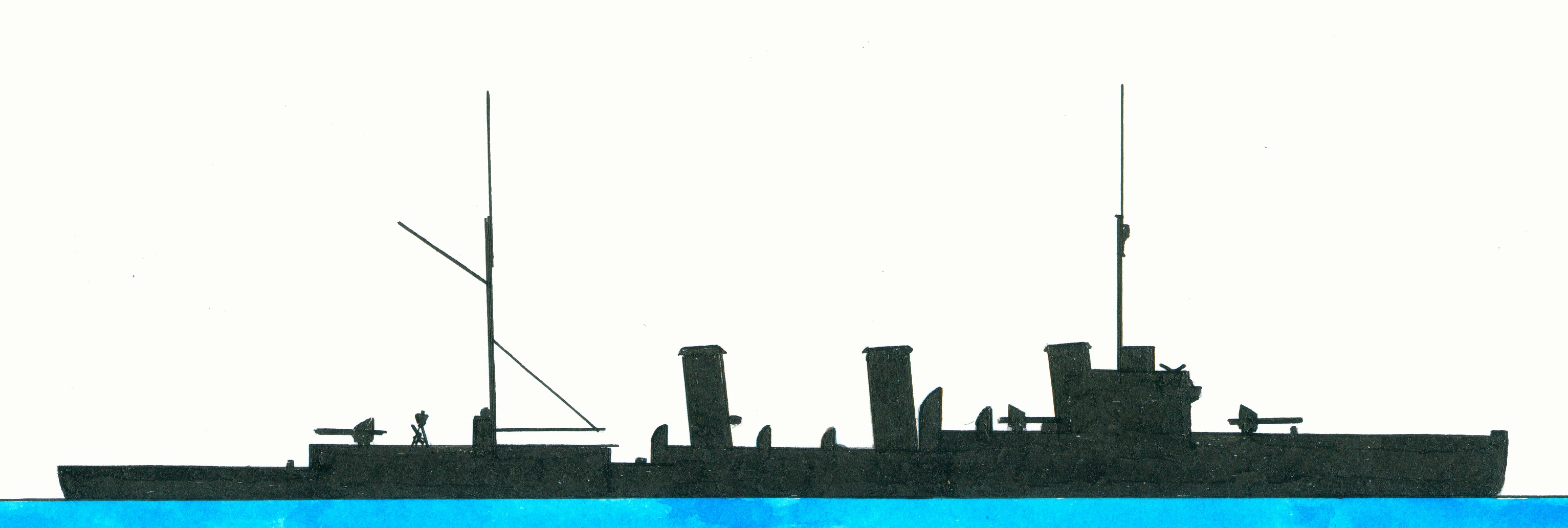Italian Bari former German Pillau and Russian Maraviev Amursky y
Svetlana-class
Laid down at the Russo-Baltic Shipyard, Reval, Russian Empire [nowadays Tallinn, Estonia] on 7 December 1913, launched on 27 November 1915, launched on 9 December 1916, transferred to Petrograd to prevent capture by the German forces in late 1917, renamed Profintern in 1924, completed by October 1926, commissioned on 1 July 1928, added to the Baltic Fleet, added to the Black Sea Fleet in 1929, overhauled late 1930s, renamed Krasnyi Krym on 31 October 1939, training ship in 1954, redesignated Experimental Ship OS-20 on 7 May 1957, reclassified as Floating Barracks PKZ-144 in 18 March 1959 and broken up in July 1959.
Design process for this class started in 1907 resulting in begin 1912 in a design for a cruiser with a displacement of 4.100-5.100 tons with a speed of 30 knots and an armament of 12-13cm/5,1” cal 55 Pattern 1913 guns. Wile the navy demanded more was concluded that the ships should be too small resulting in November 1912 in a displacement of 6.700 tons. When the shipyards agreed to lower the building costs was as compensation the speed limited to 29,5 knots. Part of the Svetlana-class consisting of the Svetlana, Admiral Greig, Admiral Butakov and Admiral Spiridov, preceded by the Muraviev Amurski-class (1) and succeeded by the Admiral Nakhimov-class.(2)
General technical class details.
Dimensions 158,4 (over all) x 15,3 x 5,56 metres or 519.8 x 50.2 x 18.3 feet and a standard displacement of 6.860 tons. The machinery consisted of 4 geared Curtis-AEG-Vulkan steam turbines and 13 Yarrow boilers supplying via 4 shafts 50.000 shp allowing a speed of 29,5 knots. Fuel oil bunker capacity 1.186 tons. Crew numbered. The armament consisted of 15x1-13cm/5.1” Pattern 1913 guns, 4x1-6,33cm/2.5” anti aircraft guns (replaced still under construction by 9-7,62cm/3” Lender guns) and 2x1-45cm/17.7” torpedo tubes (replaced in 1922 by 2x3-53,3cm/21“) . Able to take 100 mines with them. The armour consisted of a 2,5-7,6cm/0.98-2.99” thick belt over the complete hull length stretching from the lower deck to 0,91 metres/3” below the water line. Between the lower and main decks was 2,5cm/0.08” armour protection. All decks had a thickness of 2cm/0.79”. Funnel uptakes and the gun shields had an armour protection of 2,5cm thick armour, the conning tower by 7,6cm/3”.
Notes
1. The Maraviev Amurskyy and the Admiral Nevelskoy were built in Germany but confiscated when the war broke out and commissioned in the German navy as the Pillau-class cruisers SMS Pillau (since 1920 the Italian Bari) and the Elbing (scuttled at the Battle of Jutland 1 June 1916).
2. Consisting of the Admiral Nakhimov, Admiral Kornilov, Admiral Istomin and Admiral Lazarev.


